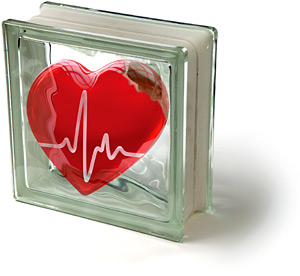I am regularly asked about statins by chiropractors whose general medical practitioner tells them they need to be on statins because their total cholesterol is a little over 200 mg/dL.
The widely reported results of the JUPITER trial1 is what brought "statins for all" to the mainstream consciousness. The question is, how many who reported on or adhere to the suggestions based on JUPITER have actually read the study? I suspect very few.
Two papers subsequent to JUPITER challenged the notion that statins should be used as a preventive strategy. de Lorgeril, et al., concluded that "the results of the trial do not support the use of statin treatment for primary prevention of cardiovascular diseases and raise troubling questions concerning the role of commercial sponsors." And Ray, et al., concluded:
"[B]ased on aggregate data on 65,229 men and women from 11 studies, yielding approximately 244,000 person-years of follow-up and 2793 deaths, we observed that statin therapy for an average period of 3.7 years had no benefit on all-cause mortality in a high-risk primary prevention population. Current prevention guidelines endorse statin therapy for subjects at high global risk of incident CVD as a means to reduce fatal and nonfatal vascular event. Due consideration is needed in applying statin therapy in lower-risk primary prevention populations."
 Not surprisingly, the primary author of the JUPITER study chimed in on this. In a Time magazine article4 about the obvious contradictory conclusions regarding JUPITER, Dr. Ridker stated:
Not surprisingly, the primary author of the JUPITER study chimed in on this. In a Time magazine article4 about the obvious contradictory conclusions regarding JUPITER, Dr. Ridker stated:
"I agree with the Ray, et al., bottom line, which is what we have always said over and over: the first things to do to prevent heart disease is to eat a proper diet, exercise regularly and stop smoking. But what [JUPITER] clearly shows is that even among people who are thin, who exercise, have low cholesterol and don't smoke, the risk is high if you have elevated levels of CRP. And being on a statin can lower your risk of having a heart event by half."
According to Dr. Ridker's statement, JUPITER subjects were thin? Really? The median BMI was 28 and the interquartile range was 25.3-32. I am 6'2" and weigh 170 lbs, which means my BMI is 21.8, which is thin according to the real-world view of thin. However, in order to be thin, according Ridker, I would have to gain 50 lbs of fat.
Also according to Dr. Ridker, being on a statin will cut one's risk of having a heart event by 50 percent. Really? There were 8,901 subjects, ranging in age from 60-71 years in the treatment and placebo groups. They were followed for a median of 1.9 years for the occurrence of the combined primary end point of myocardial infarction, stroke, arterial revascularization, hospitalization for unstable angina, or death from cardiovascular causes.
In the statin group, there were 141 major cardiovascular events versus 251 in the placebo group.1 Table 1 demonstrates what happens if you look at the math percentages in the fashion most people understand. If one took a statin, they had a 98.4 percent chance of not having a cardiovascular event, versus a 97.2 percent chance of not having an event when taking the placebo. Perhaps this is why Ray, et al., and de Lorgeril, et al., stated that the JUPITER results do not support the use of statins for preventing cardiovascular disease? There is only a 1 percent difference in cardiovascular events if normal, everyday math is applied. Is a 1 percent reduction in a cardiovascular event worth all the potential side effects (Table 2) associated with statin use?
If patients knew the potential side effects associated with statin drugs for a mere 1 percent reduction in risk of a cardiovascular event, would they take them so readily for prevention? I suspect most would probably choose otherwise.
| Table 1: Findings From the JUPITER Trial | ||
| Statin | Placebo | |
| Events - raw data | 141 / 8,901 | 251 / 8,901 |
| Events - based out of 100 | 1.6 / 100 | 2.8 / 100 |
| Actual incidence | 1.6% on statins had events | 2.8% on placebo had events |
| Prevention of events | 98.4% were without events | 97.2% were without events |
| Table 2: Potential Side Effects of Statins5-12 | ||
| polyneuropathy | peripheral neuropathy | memory loss |
| aggression | irritability | cognitive defects |
| myalgia | muscle weakness | muscle cramps |
| rhabdomyolysis | ALS-like symptoms | fatigue |
| general mitochondrial disruption | erectile dysfunction | |
A Better Way to Protect Against Cardiovascular Disease
It is quite clear that cardiovascular disease is initiated and driven by ongoing inflammation; this has been known for many years. Cholesterol is only part of the issue, and elevations represent a component of the chronic inflammatory state. So, the focus should be inflammation reduction (a point I have made repeatedly in this column).
The current American diet is excessively high in sugar, flour, and fat calories (trans- and omega-6 fatty acids), which leads to substantially elevated postprandial levels of circulating glucose and triglycerides, referred to as postprandial dysmetabolism. The outcome is an immediate increase in inflammatory markers such as free radicals and C-reactive protein, and sympathetic hyperactivity, which is directly linked to the expression of diabetes and cardiovascular disease.13-14
Not well-appreciated is that the postprandial dysmetabolic inflammatory state may be associated with the perpetuation of lumbar radicular pain, tendinopathies, and generalized musculoskeletal pain,15-19 so we should consider addressing the dysmetabolic inflammatory state in patients suffering with chronic musculoskeletal pain syndromes.
In the clinical setting, a BMI above 25 identifies patients who are pursuing dysmetabolism. An operational goal should be to achieve a BMI below 25 by eating anti-inflammatory foods and exercising daily. Proper exercise is anti-inflammatory and has an appetite-suppressing effect. And when individuals eat an anti-inflammatory diet that includes lean animal protein, vegetables, fruit, nuts and low glycemic tubers such as sweet potatoes, the postprandial dysmetabolism is blunted.
The problem is that most Americans do not eat this way, so they perpetually live in the postprandial dysmetabolic inflammatory state. For more details, see the O'Keefe, et al., paper on this topic, available as a free full text.14
Supplements may also be useful at addressing chronic inflammation. The focus should be inflammation reduction, not trying to use natural cholesterol-lowering agents such as red yeast rice to replace statins that only offer a 1 percent better preventative effect (because your goal should not be to reduce patients' risk of a cardiovascular event by only 1 percent, even naturally, but to address the underlying causes of their high cholesterol). Of special consideration should be botanical anti-inflammatories, such as ginger and turmeric, which can be eaten with meals and/or taken as a supplement. Such botanicals function via multiple anti-inflammatory mechanism.20-21 Additional key supplements include vitamin D, omega-3 fatty acids, and magnesium.22-24
A Final Note on Statins and Other Medications
Despite the negative tone presented herein toward statins, it should not be viewed that I am negative on statins in general. I am negative on the notion that they dramatically reduce cardiovascular events and thus should be taken on a preventive basis. Statins do offer anti-inflammatory benefits that may be of use to people in pursuit of dysmetabolic inflammation, which means I believe that "flamed-up" individuals with hypertension, hyperglycemia, and hyperlipidemia should be on several meds. However, ideally, these medications should be used only in the short term, while people move back toward a healthy state. The problem is patients are generally not given encouragement and proper direction on pursuing a healthy lifestyle long term to improve their cardiovascular profile.
References
- Ridker PM, et al. Rosuvastatin to prevent vascular events in men and women with elevated C-reactive protein. New Eng J Med, 2008;359:2195-207.
- Ray KK, et al. Statins and all-cause mortality in high-risk primary prevention. A meta-analysis of 11 randomized controlled trials involving 65, 229 participants. Arch Int Med, 2010;17(12):1024-31.
- de Lorgeril M, et al. Cholesterol lowering, cardiovascular diseases, and the Rosuvastatin-JUPITER controversy. Arch Int Med, 2010;170(12):1032-36.
- Park A. "Who Should Take Statins? The Debate Continues." Time, June 29, 2010.
- Gaist D, et al. Statins and risk of polyneuropathy: a case-control study. Neurology, 2002;58(9):1333-7.
- Wagstaff LR, et al. Statin-associated memory loss: analysis of 60 case reports and review of the literature. Pharmacotherapy, 2003;23(7):871-880.
- Rizvi K, et al. Do lipid-lowering drugs cause erectile dysfunction? A systematic review. Fam Pract, 2002;19:95-98.
- Tsivgoulis G, et al. Presymptomatic neuromuscular disorders disclosed following statin therapy. Arch Int Med, 2006;166:1519-24.
- Golomb BA, et al. Severe irritability associated with statin cholesterol-lowering drugs. QJM, 2004;97(4):229-235.
- Golomb BA. Statin adverse effects: implications for the elderly. Geriatric Times, May/June 2004;5(3).
- Golomb BA, et al. Amyotrophic lateral sclerosis-like conditions in possible association with cholesterol-lowering drugs: an analysis of patient reports to the University of California, San Diego (UCSD) Statin Effects Study. Drug Saf, 2009;32(8):649-61.
- Golomb BA, Evans MA. Statin adverse effects: a review of the literature and evidence for a mitochondrial mechanism. Am J Cardiovasc Drugs, 2008;8(6):373-418.
- O'Keefe JH, Bell DS. Postprandial hyperglycemia/hyperlipidemia (postprandial dysmetabolish) is a cardiovascular risk factor. Am J Cardiol, 2007;100:899-904.
- O'Keefe JH, Gheewala NM, O'Keefe JO. Dietary strategies for improving post-prandial glucose, lipids, inflammation, and cardiovascular health. J Am Coll Cardiol, 2008;51(3):249-55. Free full text available at www.sciencedirect.com/science/article/pii/S0735109707034444.
- Kauppila LI, et al. Disc degeneration/back pain and calcification of the abdominal aorta: a 25-year follow-up study in Framingham. Spine, 1997;22:1642-47.
- Gaida JE, et al. Dyslipidemia in Achilles tendinopathy is characteristic of insulin resistance. Med Sci Sports Exer, 2009;41:1194-97.
- Rechardt M, et al. Lifestyle and metabolic factors in relation to shoulder pain and rotator cuff tendinitis: a population-based study. BMC Musculoskeletal Disorders, 2010;11:165.
- Mäntyselkä P, et al. Persistent pain at multiple sites-connection to glucose derangement. Diabetes Res Clin Pract, 2009;84(2):e30-2.
- Mäntyselkä P, Kautianen H, Vanhala M. Prevalence of neck pain in subjects with metabolic syndrome - a cross-sectional population-based study. BMC Musculoskeletal Disorders, 2010;11:171.
- Goel A, Kunnumakkara AB, Aggarwal BB. Curcumin as "curecumin": from kitchen to clinic. Biochem Pharmacol, 2008;75:787-809.
- Butt MS, Sultan MT. Ginger and its health claims: molecular aspects. Crit Rev Food Sci Nutr, 2011;51:383-93.
- Ngo DT, et al. Does vitamin D modulate asymmetric dimethylarginine and C-reactive protein concentrations. Am J Med, 2010;123:335-41.
- Lee JH, et al. Omega-3 fatty acids for cardioprotection. Mayo Clin Proc, 2008;83(3):324-32.
- Rosanoff A, Seelig MS. Comparison of mechanism and functional effects of magnesium and statin pharmaceuticals. J Am Coll Nutr, 2004;23(5):501S-505S.
Click here for more information about David Seaman, DC, MS, DABCN.





